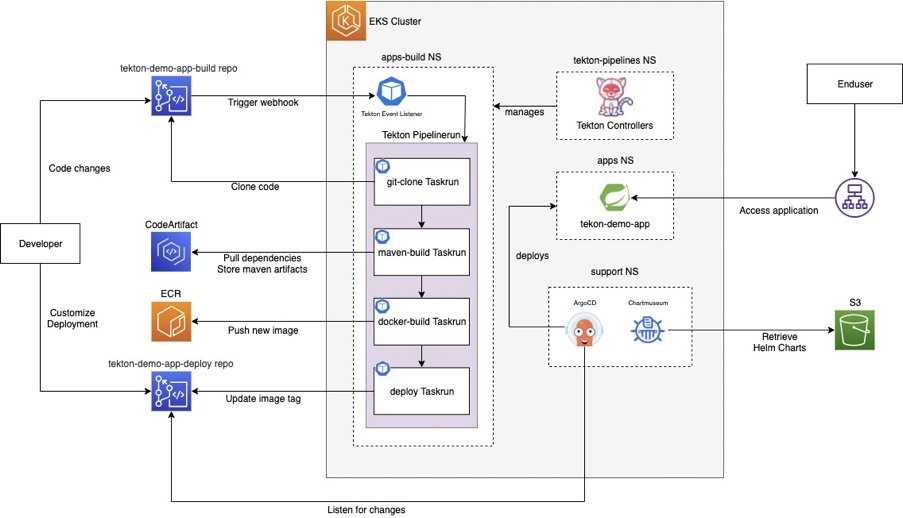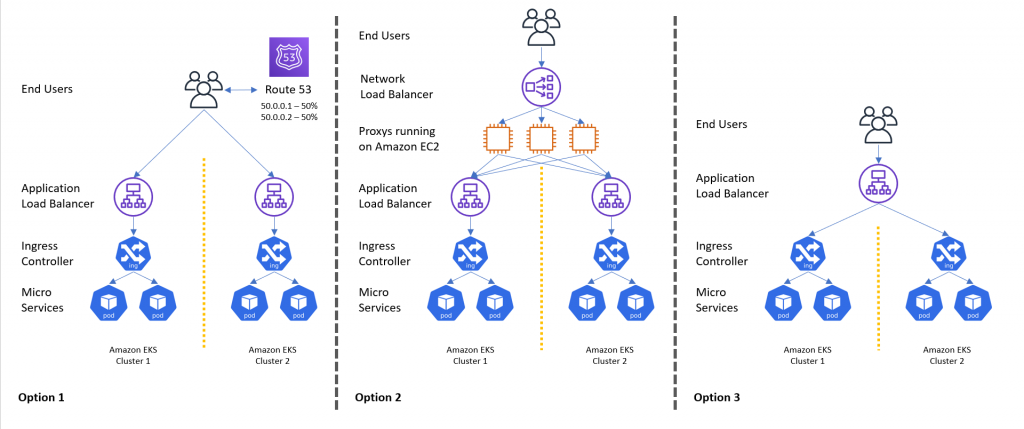Containers
Category: Advanced (300)
Life360’s journey to a multi-cluster Amazon EKS architecture to improve resiliency
This post was coauthored by Jesse Gonzalez, Sr. Staff Site Reliability and Naveen Puvvula, Sr. Eng Manager, Reliability Engineering at Life360 Introduction Life360 offers advanced driving, digital, and location safety features and location sharing for the entire family. Since its launch in 2008, it has become an essential solution for modern life around the world, […]
Autoscaling Amazon ECS services based on custom metrics with Application Auto Scaling
Introduction Application Auto Scaling is a web service for developers and system administrators who need a solution for automatically scaling their scalable resources for AWS services such as Amazon Elastic Container Service (Amazon ECS) services, Amazon DynamoDB tables, AWS Lambda Provisioned Concurrency, and more. Application Auto Scaling now offers support for scaling such resources using […]
Integrate AWS Transit Gateway with AWS App Runner Private Services
Introduction AWS App Runner is a fully managed service for running web applications and API servers with little to no infrastructure. It deploys your application containers in the AWS Cloud, automatically scaling and load-balancing requests. Once deployed your AWS App Runner service gets a service URL that your clients can send HTTPS requests to. In […]
Implementing a pub/sub architecture with AWS Copilot
Introduction The AWS Copilot CLI is a tool that since its launch in 2020, developers have been using to build, manage, and operate Linux and Windows containers on Amazon Elastic Container Service (Amazon ECS), AWS Fargate, and AWS App Runner. In this post, I’ll walk you through how you can use AWS Copilot CLI to […]
Optimizing your Kubernetes compute costs with Karpenter consolidation
Introduction Karpenter was built to solve issues pertaining to optimal node selection in Kubernetes. Karpenter’s what-you-need-when-you-need-it model simplifies the process of managing compute resources in Kubernetes by adding compute capacity to your cluster based on a pod’s requirements. With the recent release of workload consolidation, Karpenter can now be enabled to continuously monitor and optimize […]
Cloud Native CI/CD with Tekton and ArgoCD on AWS
Introduction With the ongoing popularity and adoption of container orchestrators such as Kubernetes, more and more cloud-native applications are built on top of it. Besides business applications, companies are migrating their infrastructure-related components such as CI/CD systems as well. But are those systems ready for such modern platforms? The answer depends. Clearly, most of the […]
Connecting Google Kubernetes Engine (GKE) Clusters to Amazon EKS
Customers running Google Kubernetes Engine (GKE) clusters can now use the Amazon Elastic Kubernetes Service (Amazon EKS) to visualize GKE cluster resources. This post describes how to use Amazon EKS Connector to connect a GKE cluster to the Amazon EKS console. The EKS console provides a single pane of glass to visualize all your Kubernetes […]
Onfido’s Journey to a Multi-Cluster Amazon EKS Architecture
This blog was coauthored by Eugene Malihins, Senior DevOps Engineer at Onfido, and Olly Pomeroy, Containers Specialist SA at Amazon Web Services Who is Onfido? Onfido is setting the new standard for digital access. The company digitally proves a user’s real identity using artificial intelligence (AI) by verifying a photo ID and comparing it to […]
Getting started with Consul service mesh on Amazon ECS
We recently announced the general availability of Amazon Elastic Container Service (Amazon ECS) service extension for Consul service mesh in AWS Cloud Development Kit (AWS CDK). This is a new integration that makes it easier for customers to use Consul as a service mesh on Amazon ECS. In this blog post, we show you how […]
Progressive Delivery using AWS App Mesh and Flagger
In this blog, we will cover how to implement progressive delivery using AWS App Mesh and Flagger. Progressive delivery helps customers release features quickly, decrease deployment risk, and increase deployment safety. Customers already using CI/CD pipelines and following Agile and DevOps practices will greatly benefit by implementing progressive delivery. Customers currently use various tools like Jenkins, […]









